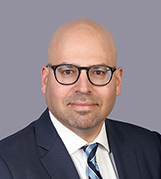Opportunities in Brazilian Bank Insolvencies: Local and Cross-Border Tools for International Creditors
Even as the Brazilian market has become embroiled in a growing wave of insolvencies, creditors may see opportunity amidst the turmoil. The obstacles presented by Brazil’s insolvency landscape may be an initial source of concern, but recent developments combined with a multijurisdictional approach can help creditors gain the upper hand.
November 29, 2023
The Americanas fraud has shaken the Brazilian market and sparked a growing wave of insolvencies. As global financial conditions continue to tighten, other Brazilian companies – including and especially Brazilian banks and financial institutions exposed to the turmoil – in financial distress may be next, putting creditors on alert.
But where there is disruption, there is also opportunity.
While some creditors may be concerned at obstacles in Brazil’s insolvency landscape, from the long completion times to the limited number of specialized courts to deal with the complexities of insolvency proceedings, there are new developments in Brazil which are expanding the creditor toolkit. A more assertive, multijurisdictional approach can help creditors to gain the upper hand.
Strategies for Creditors to Boost Monetization
Creditor-driven recovery plans or the deployment of tools to pierce the corporate veil have become available with the enactment of a new Brazilian bankruptcy law.
For example, creditors holding a liquidated debt can force a company into Brazilian bankruptcy if a debtor company does not pay within 24 hours. This creates powerful and immediate incentives. There is also a much lower bar to pierce the corporate veil, allowing creditors possibly to make a debtor company’s shareholders, directors, officers and others liable for the debt if the company was used in a way to injure creditors.
These tools can be enhanced by leveraging resources outside of Brazil, especially when there are contacts with offshore jurisdictions, such as offshore bonds or assets belonging to the debtor company or the domicile of key directors or officers. These resources can include:
- Bringing proceedings offshore. Brazilian banks and other companies often hold share interests through holding companies located in offshore jurisdictions, including the Cayman Islands and the British Virgin Islands. Creditors can obtain information in those places through administrative or judicial proceedings oftentimes without having to notify the debtor in question. Many jurisdictions also offer powerful freezing orders that can be applied worldwide.
- Conducting a worldwide asset tracing campaign. Tracing assets to identify the worldwide assets related to the debtor company or other relevant targets can not only provide creditors with a clearer picture of what to target, but can also be relevant for claims against third parties for damages, or negotiation. For instance, banks and other companies may frequently transact in U.S. dollars, so creditors could track down these transactions by obtaining discovery from correspondent banks in the United States.
As creditors face more Brazilian debtor banks and other companies in distress, new tools in Brazil present an opportunity to help them improve their negotiating positions. When combined with an aggressive multijurisdictional strategy, creditors can build the leverage needed to reach a favorable resolution.
About Kobre & Kim
Kobre & Kim is a global law firm focusing on cross-border disputes and investigations, often involving fraud and misconduct. Our capabilities include:
- We uniquely help clients in Brazil through our team in São Paulo that routinely acts in complex, cross-border insolvency, asset tracing and recovery.
- Our team of onshore and offshore contentious restructuring lawyers and litigators has deep experience tracing, freezing and recovery misappropriated assets hidden in cross-border and offshore structures.
- Our deep experience coordinating judgment enforcement and monetization strategies across jurisdictions, often involving assets and adversaries in Brazil and other Latin American countries, with lawyers admitted across key offshore financial centers, South America, Asia, EMEA and the US.






